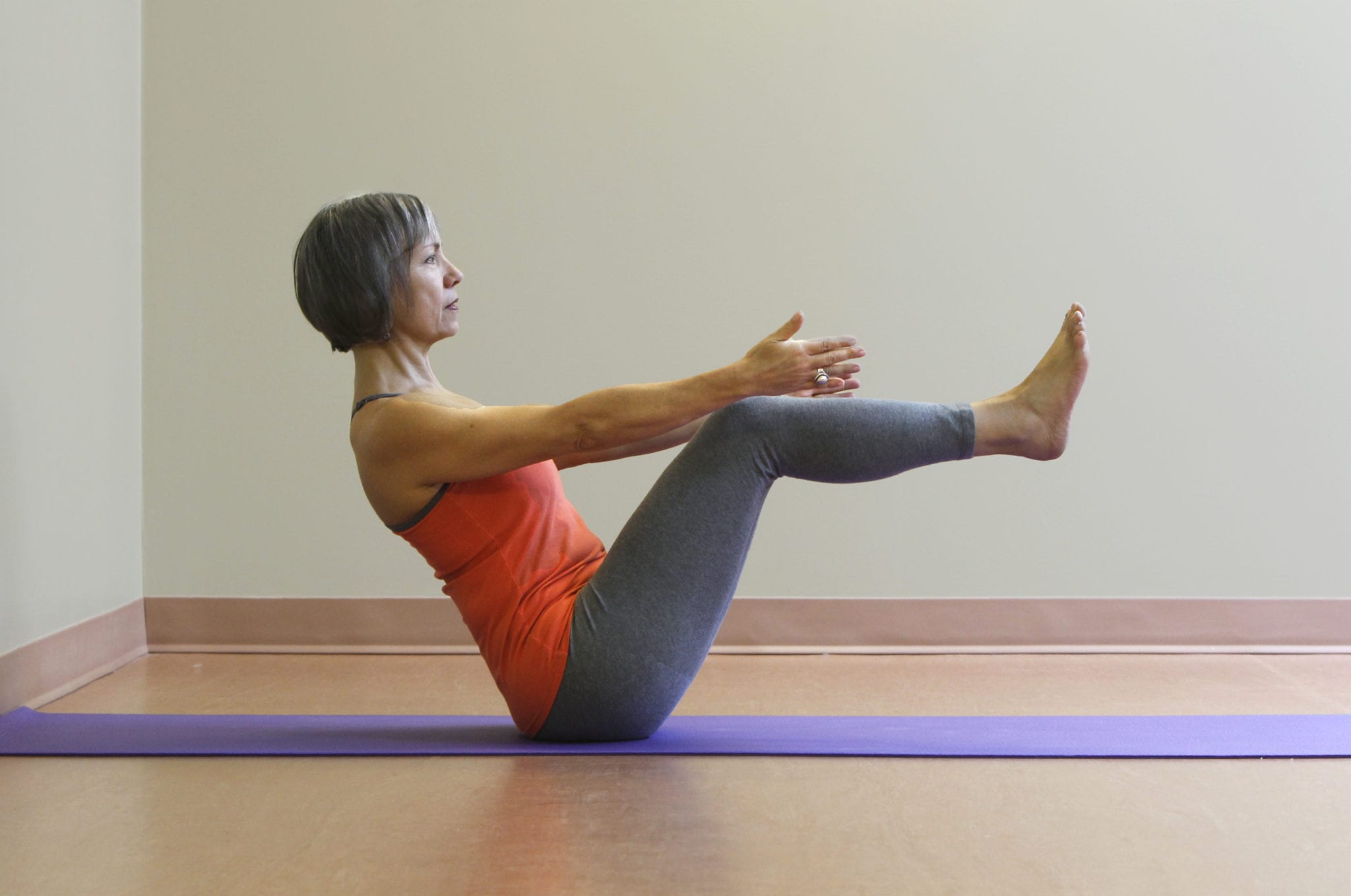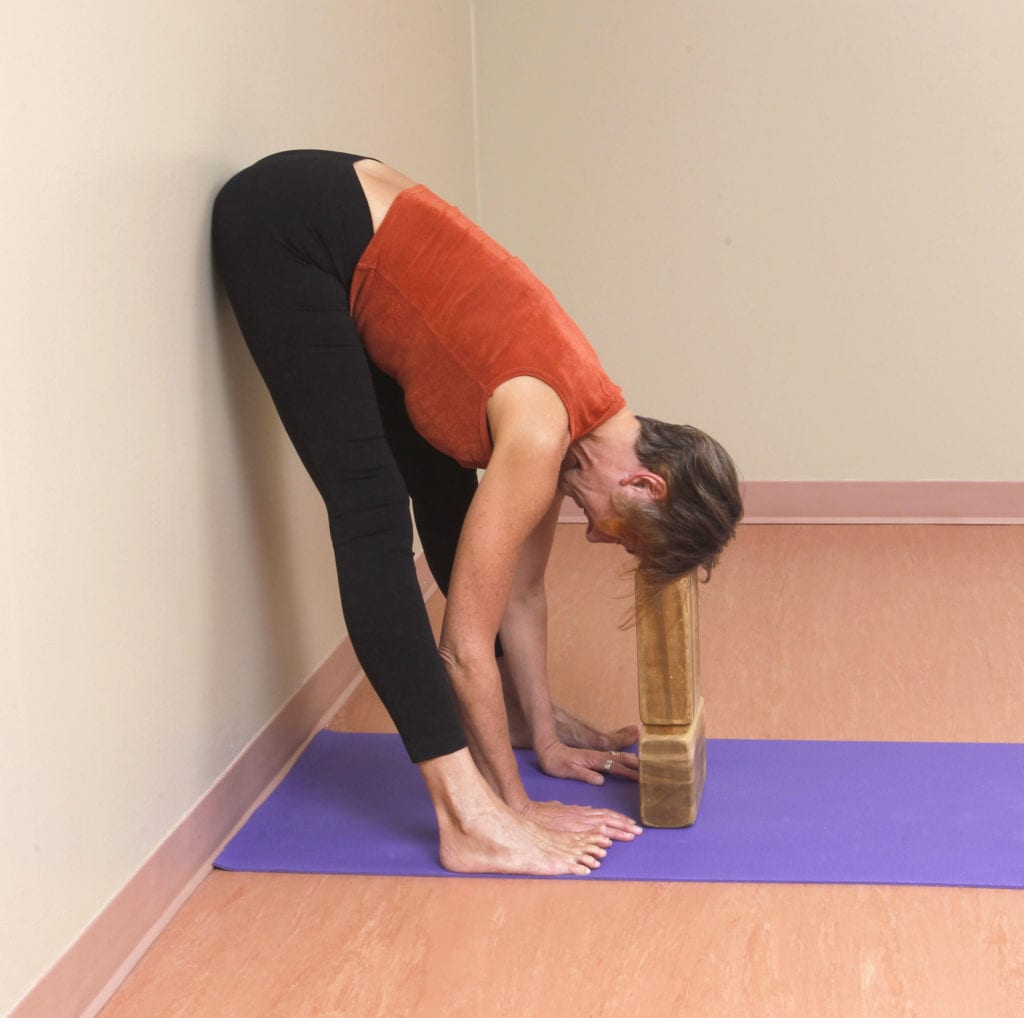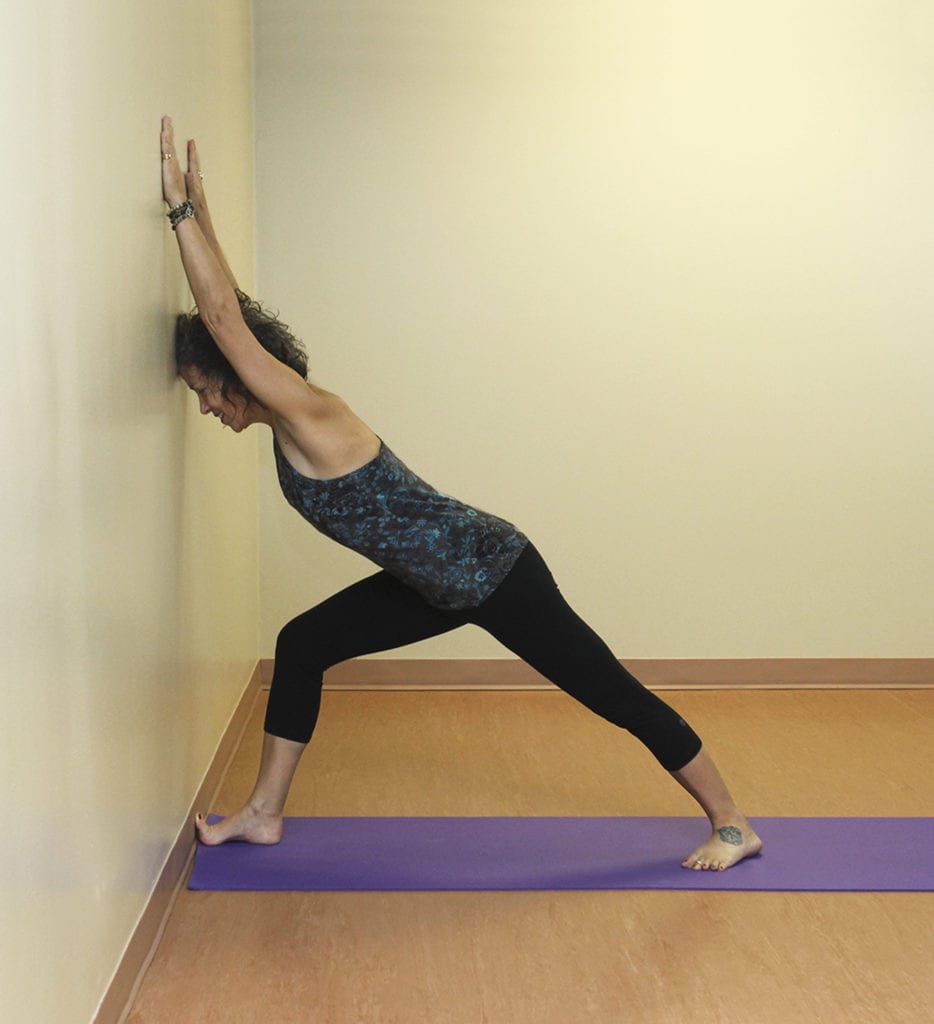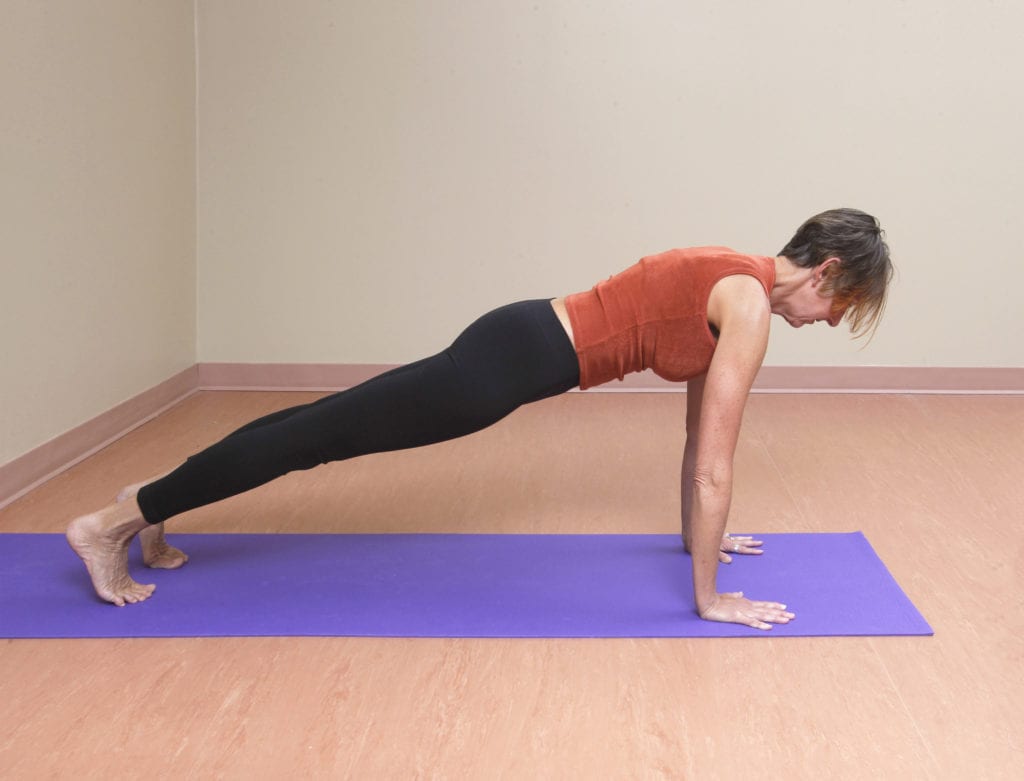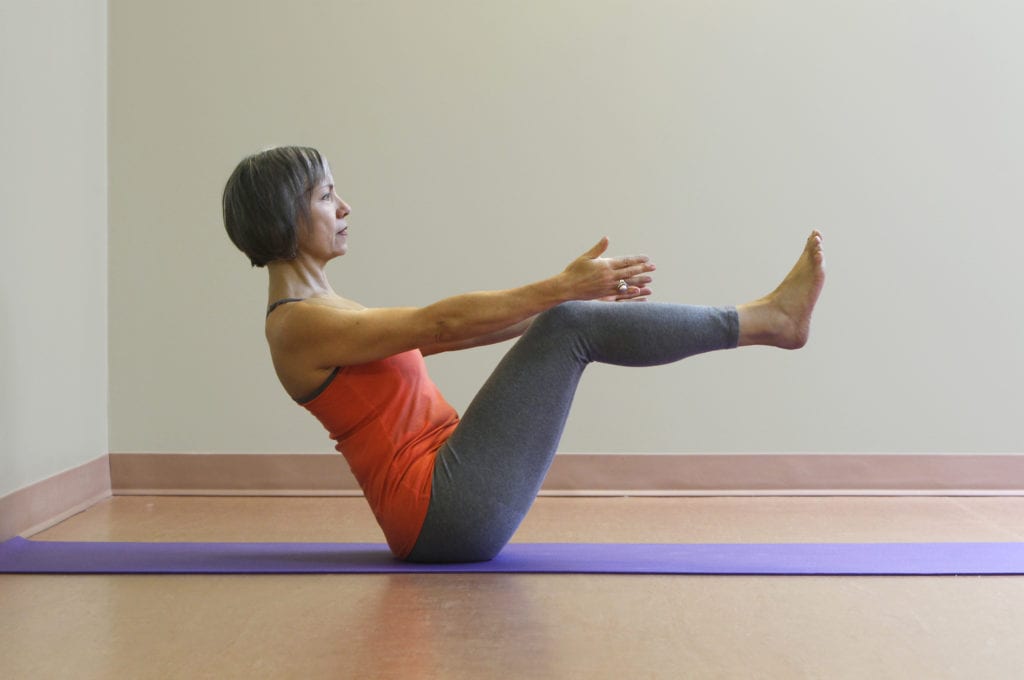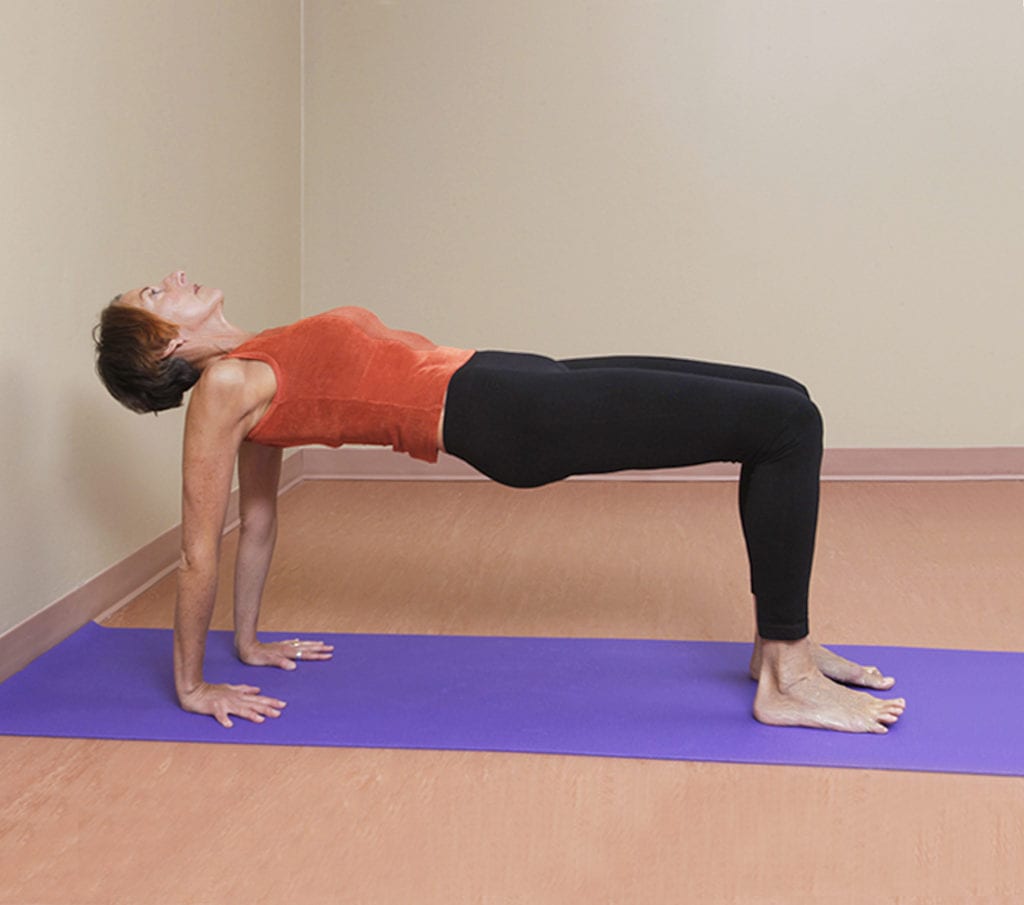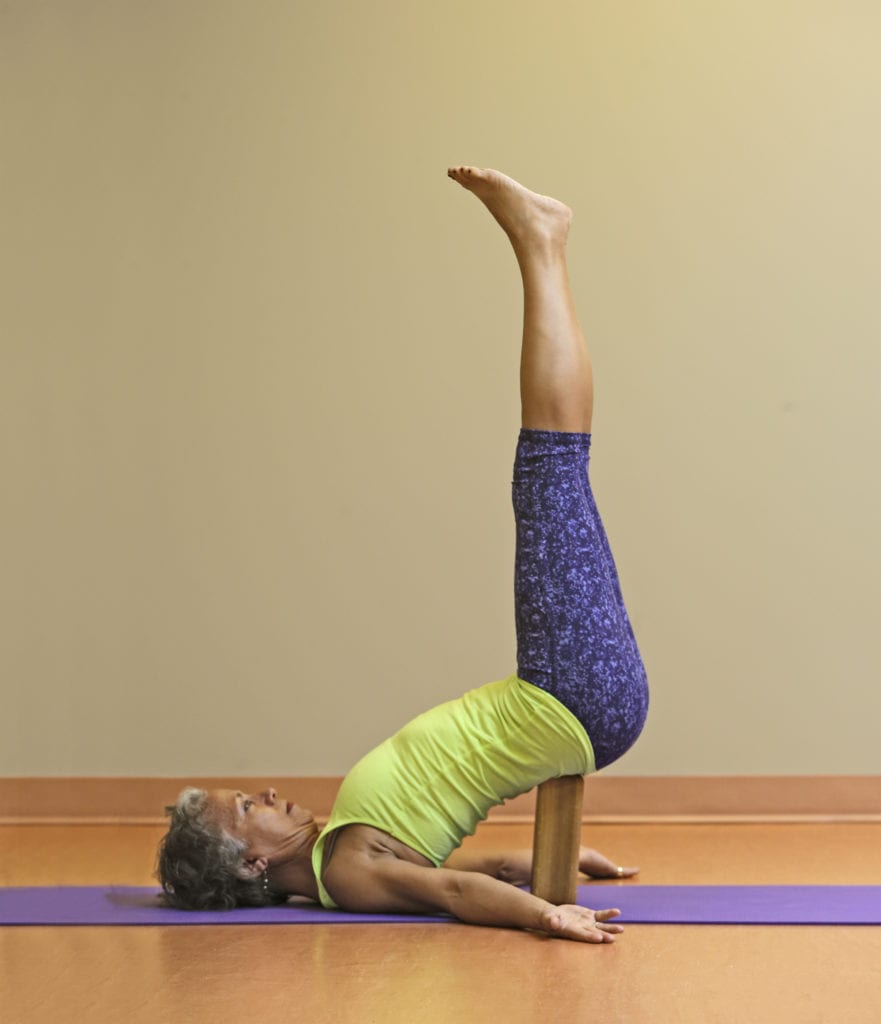As yogis and yoginis, we are often told to “live in our spine” whether in asana and meditation or off the mat in everyday living. But what does it mean to live in our spine? Simply put, yoga intends us to centre our awareness on the spine and to respond to life’s events from our higher or divine Self rather than from the limits and inhibitions of our personality/ego.
To remain more in the Self means to live more in the spine, and at the point between the eyebrows. Swami Kriyananda
Kriyananda’s quote is the antithesis of how most of us begin our yoga experience. Typically, when we first come to yoga we are focused on improving some aspect of our physical self — tight hamstrings, lower back pain, rounded and inflexible shoulders, etc. And indeed, these ailments are very likely to be improved through a regular thoughtful yoga practice.
However, yoga is not intended to make us feel better, particularly by focusing only on our five external senses — sight, sound, smell, touch and taste. As a spiritual practice with a physical component, yoga is intended to awaken us to our true Self — the source of our truth and wisdom. We undertake this by undoing and releasing whatever inhibits us from returning to our true nature. By the way, our true nature is not located outside ourselves in the external world. Instead, we must travel inward, and we do so, by living and breathing in the spine.
Certainly, we need our five senses to function in the physical world, however, when we only access the five physical senses, we limit our understanding and experience of life to our outward perception of the world. Thus, our awareness and energy remains directed outward into the world rather than inward and upward to the inner experience of our intuition located at the point between the eyebrows. By maintaining our awareness and breath in the spine, we develop the capacity to move our life-force energy up the spine into what is familiarly known as our third eye, that is, our intuitive sixth sense — the voice of our truth and wisdom.
Staying focused only on our five external senses does not provide us with the whole truth necessary for healing, growth and awakening, which is why yoga is referred to as an integral practice. Yoga integrates information and knowledge gained from our five senses with intuition, thereby providing a holistic view of our experiences. More concretely, the primary physical benefits of a yoga practice are the release of blockages and tension. When tension is released from the body so follows the breath and the mind. This act of surrendering tension allows the inner silence of a quieted mind to express its intuitive wisdom, which unveils, layer by layer, the root cause of our suffering.
Hence why, for yogis, it all starts with living and breathing in the spine. In the following sequence of poses and complementary yoga actions, notice how your awareness is kept close to the spine. If you find the yoga actions below too complex, do the poses while just holding your awareness on your spine and awaken your inner knowing.
Action: Take a normal inhalation. At the end of the exhalation, scoop the lower abdominals (just below the navel) inward and up the face of the spine. Inhale and feel your breath travelling up your spine through the crown of your head and down the back of the spine out through the tailbone.
For more advanced practitioners, on the exhale, feel how the front bottom ribs draw in and down toward the front hip bones, the skin of the front hip bones slides up toward the lower ribs and the lower abdominals draw into the core.
UTKATASANA prep (Chair pose prep)
Stand with your feet a comfortable distance apart. Bend your knees, fold at your hip creases and place your hands onto your thighs. Stay for 5 to 10 breaths while you find the actions.
UTTANASANA (Standing Forward Bend pose)
Stand 8 to 10 inches away from the wall with the outer edges of your feet along the edges of the mat. Rest your pelvis into the wall and keep it there while you bend forward. Have sufficient height in place to rest your head, and possible hands, onto. Stay for 5 to 10 breaths while you find the actions.
VIRABHADRASANA I prep (Warrior I pose prep)
Place your right foot close to the wall (toes up the wall is optional). Step your left foot back and turn it out slightly. Draw your left hip forward in line with your right one. On an exhalation, find the actions and move into the pose by bending the right knee and gliding both hips toward the wall. Walk your hands up the wall straightening your arms. Stay for 5 to 10 breaths while you again find the actions. Repeat on other side.
PLANK
Start in an all-fours position with toes tucked. Inhale, press into your hands and toe mounds. Exhale, find the actions and move into Plank by straightening your legs and arms. Stay for 5 to 10 breaths while you again find the actions.
NAVASANA variation (Boat pose – bent knee variation)
Sit with knees bent, feet on the floor and hands holding the back of your thighs. Keep your breastbone lifting to your chin and lean back onto your sits bones. You will probably come up onto your toes. Find the actions and use this abdominal support to lift your legs. Stay for 3 to 5 breaths while you once again find the actions.
ARDHA PURVOTTANASANA (Half Upward-Facing Plank pose)
Sit with your legs straight out in front of you. Place your hands alongside or just behind your hips. On an exhalation, find the actions and move into the pose by lifting your pelvis upward, rolling over your heels onto your feet, straightening your arms and bending your knees. Stay for 3 to 5 breaths while you once again find the actions.
VIPARITA KARANI variation (Legs up the wall pose)
Lie on your back with your knees bent. Press into your feet and upper arms and lift your pelvis as high as possible. You may need to come up on your tiptoes to slide a firm support (the height you need) under your pelvis. Balance your sacrum on the block and then straighten your legs upward so your ankles are over your hips. Release the action and rest with your awareness on your breath.
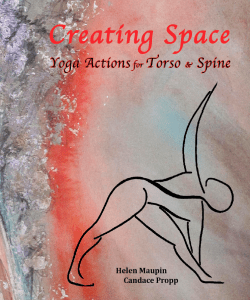 Winnipeggers Helen Maupin (www.righttojoy.com) and Candace Propp (www.natureofcontentment.com) are certified senior yoga teachers and authors of the Creating Space: Yoga Actions book series. To purchase these print or ebooks, visit here. For yoga teacher training (200- & 500-hour) with them and Stacy Schroder or to purchase the Yoga Actions teacher training facilitator manuals and student handbooks contact www.sereneyogastudio.com.
Winnipeggers Helen Maupin (www.righttojoy.com) and Candace Propp (www.natureofcontentment.com) are certified senior yoga teachers and authors of the Creating Space: Yoga Actions book series. To purchase these print or ebooks, visit here. For yoga teacher training (200- & 500-hour) with them and Stacy Schroder or to purchase the Yoga Actions teacher training facilitator manuals and student handbooks contact www.sereneyogastudio.com.

